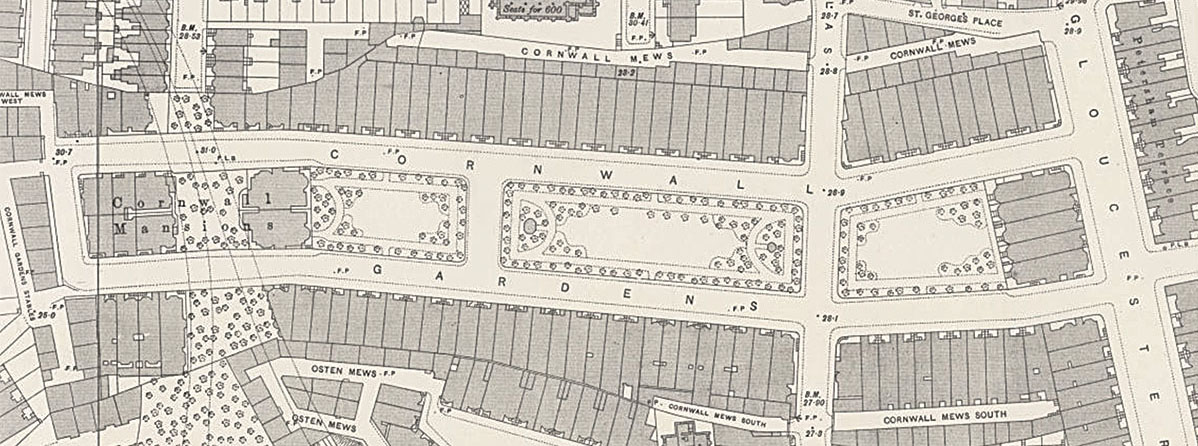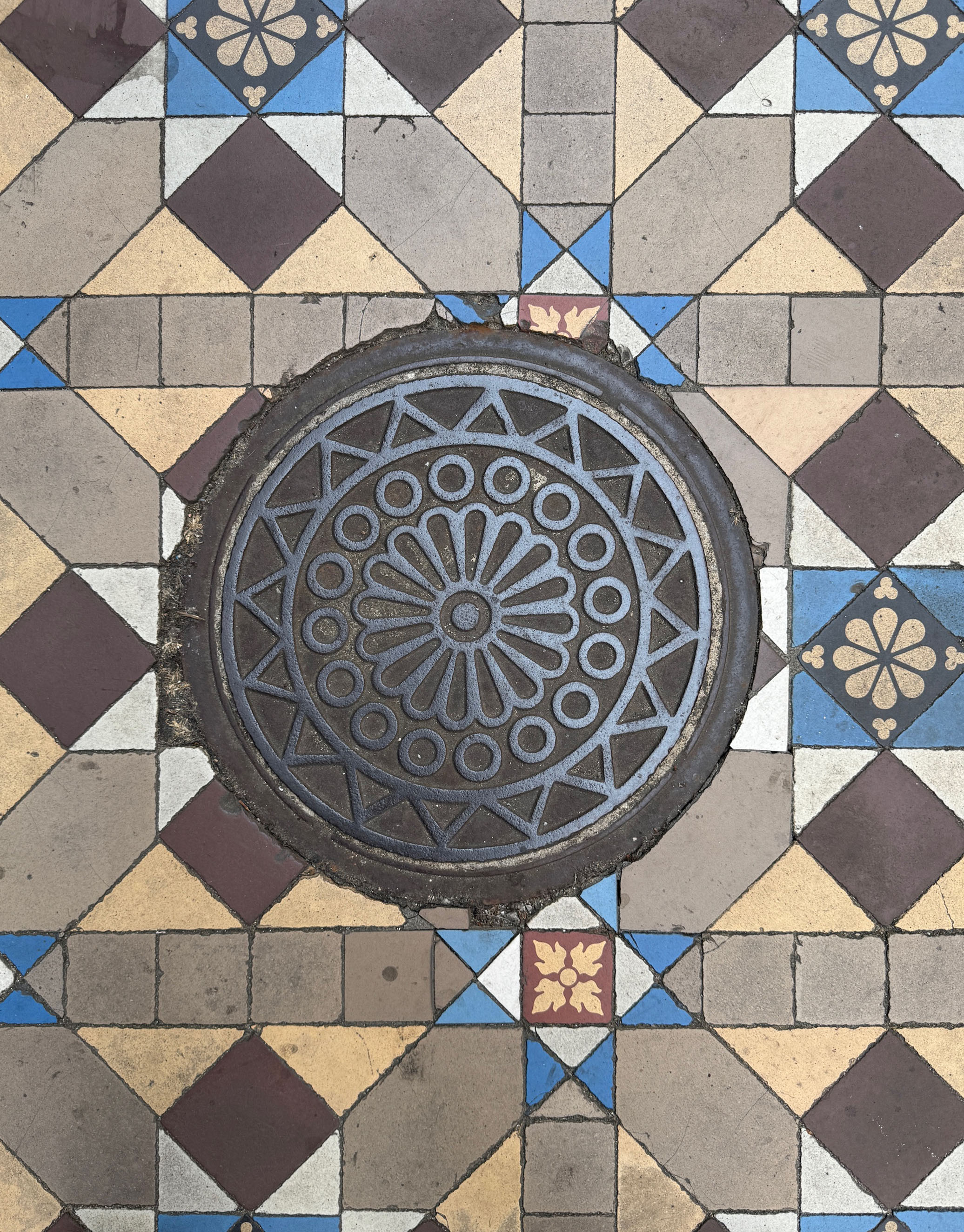This is my street in London, Cornwall Gardens > > > >
The street is
comprised of two opposite rows of white stucco townhouses with a garden in the centre (see survey map below).
Originally farmland, the property was purchased in 1803 by Thomas Broadwood, a London musical instrument manufacturer. In 1844 he passed the property to his son, also Thomas, and plans began for its development.
Construction (two opposite rows of townhomes) began in 1863 and continued until 1876, with the north side (shown in the photo to the right) completed in 1871.
Note the cast-iron "plate" embedded in the pavement. It once provided access to a coal-storage vault beneath the sidewalk.
Now-a-days the vaults are mostly used for temporary storage of rubbish, but they were originally used to store coal for home heating. The cast-iron covers could be removed, allowing coal to be delivered into the vault from above.
Scroll down for more ... |














